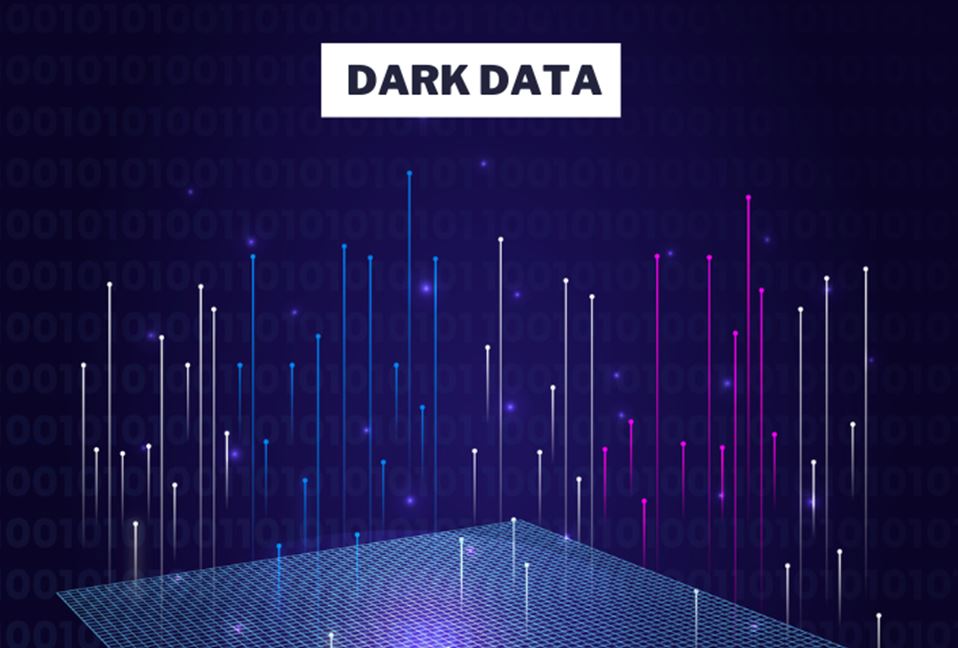What Is Dark Data? How Should Enterprises Deal It?
Dark Data is not normal data instead they are unstructured and rarely looked at in business.
As they are collected and stored over time but do not get in use, it is a critical challenge for enterprises.
Addressing dark data is important for businesses. Overlooking can lead to serious risks such as breach of data and cyberattacks.
Learn how businesses can deal and tackle dark data in the right way.
What Is Dark Data?
Dark data can be defined as data that organizations collect, process, and store during their regular operations but fail to utilize effectively. This data is typically unstructured, and its potential value remains hidden from view.
In layman terms, Dark data refers to those types of data that are unstructured and unguarded and businesses aren’t aware of. However, it gets collected and stored over time but isn’t analyzed, and isn’t used.
Dark data is a serious concern in business because the company isn’t aware of it, resulting in unprotected risk to security and compliance. But only a few, almost 33 percent of IT staff are knowledgeable about dark data risks.
For example; Dark data can be used for ransomware attacks and data breaches by hackers and sneaky folks on the internet. They love to get their hands on this secret stuff and use it for no good.
This can lead to severe damage to business reputation and identity theft alike.
How Should Enterprises Deal With Dark Data From Fact?
The popular method to trace and tame dark data is through the use of advancing technologies like artificial intelligence (AI), and machine learning. They can help businesses locate, safeguard, and gain overall visibility into their dark data.
But the real game here is how to use these technologies for better.
Here’s how you can leverage AI and ML for dark data management:
- Use machine learning algorithms to automatically classify and categorize dark data. ML models can identify patterns and keywords to determine the content and relevance of unstructured data.
- AI can assist in data cleansing by identifying and rectifying errors, duplicates, and inconsistencies in dark data, ensuring that it meets quality standards.
- Implement AI-powered search engines that use NLP to improve data retrieval from dark data sources.
- Develop predictive models using machine learning to identify trends, anomalies, or opportunities within dark data.
- Implement AI-driven automation for routine tasks related to data management.
- Integrate AI-driven chatbots or virtual assistants with NLP capabilities into customer service operations.
- Use machine learning for email analysis to identify dark data sources or key information.
How To Analyze & Leverage Dark Data In Business?
Indeed, organizations collect but do not leverage dark data. To tackle these challenge or issue, businesses can follow a structured approach:

1) Identify and Classify Dark Data
Start by understanding what includes dark data within your organization. Mainly, this may include unused customer feedback, old logs, archived documents, or any data that is collected but not actively used. So, categorize and classify this data!
2) Data Governance and Policies
Develop data governance policies to manage dark data effectively. Define how data should be collected, stored, and disposed. This is the best way to leverage dark data in business.
3) Data Privacy and Security
Implement robust data privacy and security measures to protect sensitive information within dark data. Compliance with data protection regulations like GDPR or HIPAA is a good consideration here.
4) Data Retrieval and Analysis
Invest in tools and technologies for data retrieval and analysis. Data analytics, machine learning, and AI can help extract insights from dark data
5) Training and Awareness
Educate employees about the importance of data management and their role in handling dark data. Create an encouraging culture of responsible data usage.
The Implications Of Dark Data For Businesses
Following are the concerned implications of dark data for businesses:
- Missed Opportunities: Businesses may lose out on valuable insights, potential revenue streams, and cost-saving measures simply by not recognizing and utilizing their dark data.
- Privacy and Security Concerns: Dark data may also pose privacy and security risks. It can become a target for data breaches or misuse.
- Compliance Challenges: As dark data can include sensitive or regulated information that must be managed according to legal and industry-specific standards.
Sources Of Dark Data
Dark data remains “dark” because it is not being leveraged for decision-making or other purposes. Here are some sources of dark data explained in plain language:
Emails and Messages: Every email and chat message you send or receive can contain valuable information about your business, but much of it often goes unused.
Log Files: Computer systems and applications generate log files that record events and activities. These logs can hold insights but are typically ignored.
Unused Documents: Many documents, like old reports, presentations, or spreadsheets, are created but never looked at again.
Obsolete Software: Data stored in old, unused software can become dark data when you switch to new systems.
Customer Feedback: Surveys, reviews, and customer feedback are sometimes collected but not thoroughly analyzed can lead to dark data development.
Sensor Data: Sensors in manufacturing or IoT security devices generate a vast amount of data. Again, portions of it are used while others remain unused over time.
Archived Data: Information stored in archives, whether physical or digital, may be forgotten and left untouched.
Obsolete Reports: Historical reports and studies might contain valuable historical data, but they are often neglected.
Benefits Of Taming Dark Data
1) Cost Reduction
By identifying and managing dark data, you can reduce the storage and infrastructure costs. This can lead to cost savings for your organization.
2) Improved Data Quality
Dark data often includes duplicate, outdated, or inaccurate information. By rectifying these data, you can improve overall data quality.
3) Data Monetization
Some dark data may have monetary value that you can use via various methods such as selling data to third parties or using it for partnerships and collaborations.
Dark Data FAQs
How can businesses identify dark data?
Businesses can identify dark data through data classification, data audits, and by assessing their existing data collections.
What are some common sources of dark data?
Common sources of dark data include legacy systems, unused databases, archived communications, and unanalyzed customer records.
How can businesses leverage dark data for growth?
Businesses can leverage dark data through machine learning and effective data governance. All this can lead to better decision-making, improved customer understanding, and enhanced competitiveness.

